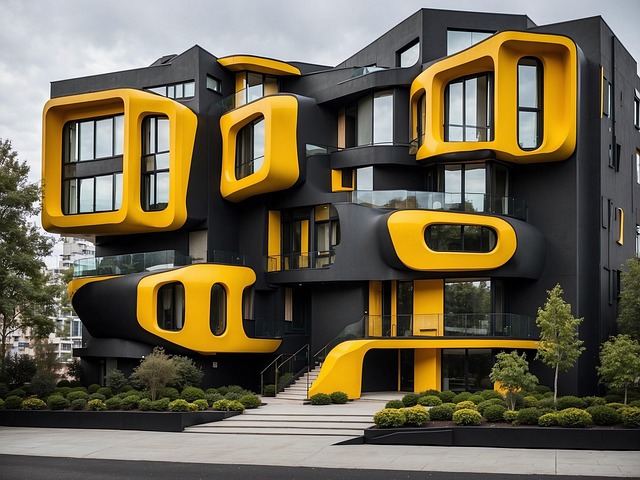Strategic placement of plants in residential design aligns with each species' sunlight needs, optimizing growth and aesthetics. Understanding light preferences, natural lighting, and room dynamics allows for balanced indoor gardens that enhance air quality and visual appeal through strategic window placements, catering to both sun-loving and shade-tolerant plants.
Discover the secrets to thriving indoor gardens with our guide on strategic plant placement. Understanding light requirements and environmental factors is key to creating an optimal growing environment in your home. We explore how to integrate plants seamlessly into your living spaces, considering natural light, shade, and air circulation. Learn expert tips for designing residential plant arrangements that maximize growth potential, ensuring your indoor oasis flourishes year-round.
Understanding Light Requirements for Plants
Plants, much like humans, have specific needs when it comes to light—a crucial element for their growth and overall health. In the context of residential plant design, understanding these requirements is essential for creating an optimal environment that supports lush and vibrant greenery indoors. Different plants have varying light preferences, ranging from low-light varieties that can thrive in dimly lit spaces to high-light species that demand ample direct sunlight.
Residential plant owners should consider factors like the natural light available in their homes, the time of day when light is most abundant, and the proximity of windows or other light sources. For instance, plants positioned near south-facing windows often receive the most intense sunlight, while those by east or west-facing windows may get less direct light but more consistent illumination throughout the day. This knowledge allows for strategic plant placement, ensuring each species receives the ideal balance of light to flourish in a residential setting.
Factors Influencing Optimal Plant Placement
When considering strategic plant placement for optimal light and growth conditions in a residential setting, several factors come into play. The first is understanding your space: how much natural light enters each room through windows and doors, and what areas receive direct sunlight versus indirect or dappled light. This knowledge guides the selection of plants suitable for specific locations—for instance, selecting sun-loving species like orchids and bromeliads for well-lit spaces, or choosing shade-tolerant options such as ferns and hostas for areas with less direct sunlight.
Additionally, residential plant design incorporates considerations like room size, furniture arrangement, and personal preferences. Plants can be used to divide spaces, create visual interest, or enhance existing decor. For example, tall indoor trees placed near windows can add a dramatic touch while filtering light, while smaller, trailing plants can be nestled along shelves or ledges to create a cozy atmosphere. Incorporating these factors into your plant placement strategy ensures that both the aesthetic appeal and functional benefits of greenery are maximized throughout your home.
Designing Residential Spaces for Healthy Plants
When designing residential spaces, incorporating plants is an excellent way to enhance aesthetics and air quality, but strategic placement is key to ensuring their health and longevity. In addition to choosing suitable species for your climate and lighting conditions, understanding how light interacts with your space is vital.
Windows play a significant role in residential plant design; utilize natural light by placing plants near them, orienting them for maximum sun exposure during the day, or providing artificial grow lights in lower-light areas. Remember to consider both direct sunlight, which thrives most plants, and indirect light, suitable for more delicate varieties. A thoughtful approach to these factors will create a thriving indoor garden that complements your living space.
Maximizing Growth Potential Through Strategic Positioning
In the realm of residential plant design, strategic positioning is key to unlocking each greenery’s full growth potential. Just as sunlight plays a vital role in photosynthesis, carefully considering where to place plants within your living space can dramatically impact their health and vibrancy. For example, placing sun-loving species near windowsills ensures they receive ample light for optimal growth, while shade-tolerant varieties thrive in more subdued areas. Understanding each plant’s specific light requirements allows you to create a harmonious balance where every resident green can flourish.
Strategic plant placement, informed by an understanding of light requirements and various environmental factors, is key to creating thriving indoor gardens. By designing residential spaces with optimal conditions for plant growth, from ample sunlight exposure to suitable temperatures and humidity levels, folks can foster a vibrant tapestry of flora. Incorporating these principles into residential plant design not only enhances aesthetics but also contributes to improved air quality and overall well-being. In today’s digital era, prioritizing strategic plant placement is a game changer for cultivating healthy, robust greenery within homes.
